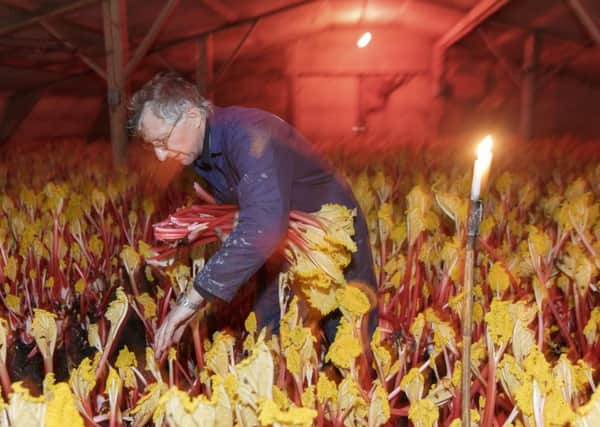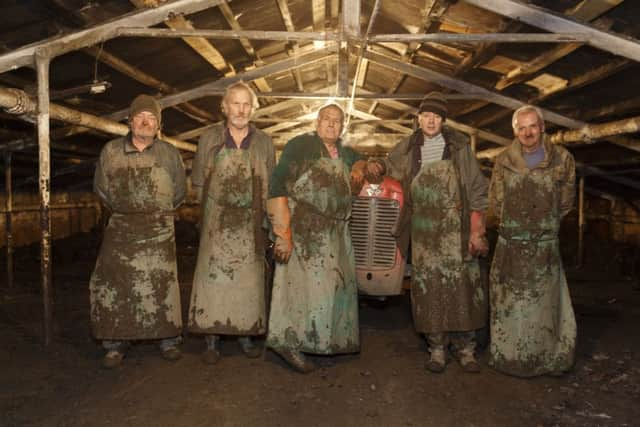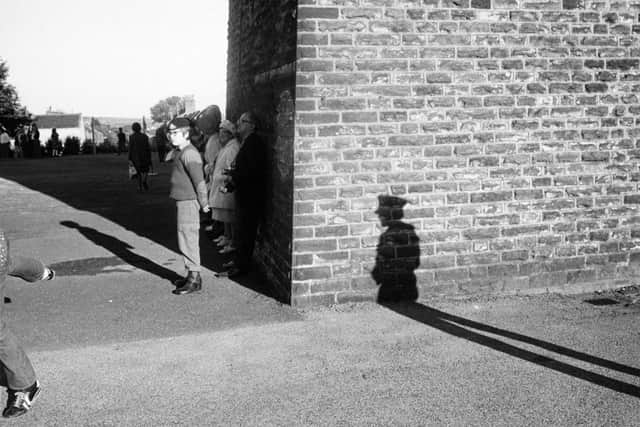Martin Parr on Yorkshire rhubarb, Instagram and Saddam Hussein watches


The Wikipedia entry for Martin Parr begins ordinarily enough.
There’s a brief run-down of the photographer’s early years growing up in Surrey, a mention of his Yorkshire grandfather who first inspired him to pick up a camera and lengthy sections on the awards he’s won and the criticism his work has sometimes provoked. But amid the run of the mill biographical information there is one sentence which leaps from the screen.
Advertisement
Hide AdAdvertisement
Hide AdIt reads: ‘Parr also collects, photographs and various other items of popular culture such as wallpaper, Saddam Hussein watches and prostitute advertising cards from phone boxes’.


No further explanation is offered and it smacks of a little online vandalism.
“Oh no it’s all true, come with me to the basement,” says Parr, heading downstairs in his Bristol town house. There in a small room lined with photographic books – another of his collections – is a glass cabinet, the kind you used to see in old town museums. On one shelf are Chinese teapots, on another, cigarette cases, all featuring dogs which have been into space and there on the bottom are the watches. “It’s not just Saddam Hussein,” he says by way of clarification. “There are other dictators like Gaddafi and look at that one there, that’s Martin Luther King.”
The calling cards aren’t on display, but it’s the photographs rather than the numbers he’s interested in. He admits that he has always been something of a magpie and he can now regularly be found trawling eBay for memorabilia.
Advertisement
Hide AdAdvertisement
Hide Ad“Look, these rugs commemorate 9/11 and I’ve also got quite an extension collection relating to Obama.” One item, kept on the top shelf of his cabinet is a Justice Has Bin Done baseball cap, produced following the killing of the al-Qaida leader in his Pakistani safe house five years ago.


Parr’s various collections probably shouldn’t come as any surprise, given that as a photographer he has always taken a slightly left-field look at life. It was Parr who in the early 1980s took the now iconic pictures of New Brighton as the sun set on the Great British seaside holidays in his collection The Last Resort. A few years later it was the middle-classes who became the subject of Parr’s lens as he chronicled the dinner parties and the spend, spend, spend attitude which typified Britain under Margaret Thatcher.
His latest collection, which focuses on Yorkshire’s rhubarb triangle, is similarly off-beat. Commissioned by Hepworth Wakefield as part of the gallery’s fifth anniversary celebrations, there are few of the usual atmospheric shots inside the forcing sheds as workers harvest the crop by candlelight.
“There is a rather romanticised image of rhubarb, partly because those rather lovely silhouetted pictures are all that anyone sees. But it’s a manual industry and being bent double in those low-ceiling sheds for hours at a time is back-breaking work. I spoke to one miner who is now a rhubarb farmer and he said it was harder than being down the pit. That’s what I wanted to show. I wanted to show the reality of the industry and the people who make it happen.”
Advertisement
Hide AdAdvertisement
Hide AdWhile the process of growing and forcing the rhubarb has changed little over the years, the industry is facing challenges. There are now just a dozen or so farms operating within the triangle, which extends to Morley, Rothwell and Wakefield and the number of skilled workers gets smaller each year. For many, selling to supermarkets is no longer viable and while Yorkshire rhubarb has been given European Union designated status for some that just means more bureaucracy.


There’s also the problem of climate change. Warmer winters are not good for forcing rhubarb. However, while much of Parr’s work seems to capture the end of an era, in Yorkshire he says he found an industry in rude health.
“I just got back from India last night, but I hear there has finally been some frost in Yorkshire,” says Parr, who blames jet lag for momentarily misplacing a slice of his wife’s Christmas cake.
“That’s good news and it should make for a good harvest. Rhubarb hit its nadir about 20 or 30 years ago. For a certain generation it was associated with wartime and inevitably fell out of fashion. However, it does seem to be enjoying a renaissance, top chefs are cooking with it and despite everything there is a sense of optimism about the future.”
Advertisement
Hide AdAdvertisement
Hide AdThe Rhubarb Triangle and Other Stories opens at Hepworth Wakefield next week and also includes a retrospective of Parr’s work.


The exhibition, the largest in Britain for 14 years, features almost 400 images, including a number from one of his first collections The Non-Conformists taken in and around Hebden Bridge in the early 1970s. “I moved there from Manchester Polytechnic and there was definitely a sense that this was a place on the brink of change.
“By then it had already become a bit of a hippy enclave, but the old rural mill town community still existed. Back then, Sunday was the quietest day of the week. It was a day when the world stopped and the churches were full. People often ask have I ever thought of going back. I’ve visited, I was there only last year, but I wouldn’t want to photograph it again. It’s a completely different places and there is so much else that I want to photograph. I don’t want to look back.”
The Non-Conformists collection was taken entirely in black and white, but Parr soon embraced colour. The Last Resort, with its bright, saturated colours, introduced his now distinctive style and subject matter. Some thought his work garish and trivial. Others accused Parr of exploiting the working classes and when in 1994 he applied to join Magnum, the famous agency run as a co-operative, some members campaigned against him.
Advertisement
Hide AdAdvertisement
Hide Ad“Yes, there was some opposition, but there were also a lot of my peers who supported me. In the end I just got the 66.6 per cent of the votes I needed to be accepted, which I like to remind people is a landslide in political terms.”
His entry into the Magnum fold opened a significant number of doors, particularly into fashion with Parr working with a number of designer labels. For the last two years he has been president of the agency, and as well as being instrumental in appointing new CEO David Kogan, he hopes he has helped it make the most of online and social media opportunities, while still protecting copyright.
“Next year is our 70th anniversary and the producers of Downton Abbey are making a TV drama about the early years of Magnum, so while I won’t make an appearance that should be good for our profile.
“The great thing about a co-operative is that everyone has a voice, but the downside is that because everyone has a voice there are times when opinions clash and times when the original ideals get a little lost.
Advertisement
Hide AdAdvertisement
Hide AdHe added: “It is a challenging time for any media company whether you work in words or pictures. The world is changing and there are now so many different platforms on which you can get your work seen and so much more opportunity for people to pinch images. My work has been used without permission probably hundreds of thousands of times, but you have to choose who you go after.”
Parr has got an Instagram account and he’s on Facebook and Twitter, although he doesn’t actual post anything himself. Instead his team at his studios in London take care of his online presence, leaving him to get on with the business of taking pictures.
“I recognise its importance, but I’m too old for all that. I don’t even take pictures on my phone, I just don’t see the point.” Parr is always working. He’s in the middle of a project on the secret life of the City of London and another on Oxford University, but his work on Yorkshire’s rhubarb triangle represented something of a homecoming.
“My grandfather lived in Calverley and I visited him a lot as child. He was an amateur photographer and it was really down to him that I got into a photography. It’s also lovely to be able to do a project for the Hepworth, which has always been keen to give photography a platform.”
Advertisement
Hide AdAdvertisement
Hide AdThe Rhubarb Triangle and Other Stories, Hepworth Wakefield, February 4 to June 12. 01924 247360, hepworthwakefield.org. Martin Parr will be at the gallery on February 26 where he will be discussing his career.